Optical networks are undoubtedly important in the increased demand for data throughput and efficient bandwidth utilization in the continual development of digital communication, especially with the introduction of DSP in 100G ZR applications. The so-called coherent optical transceivers of 100G are at the core of the transmission with high quality over long distances through a single instance of span. These advanced devices facilitate improved transmission spectral efficiency through modulation or adopt digital signal processing to increase the tolerance towards many types of impairment, driven by the ever-growing demands of modern data centers, telecommunications, and cloud-based infrastructure. This review of the relevant literature discusses the introduction of 100G coherent optical transceivers into the optical networks and the advantages, fields of application, and the innovation that underpins their growth.
What is 100G Coherent Technology and How Does it Work?
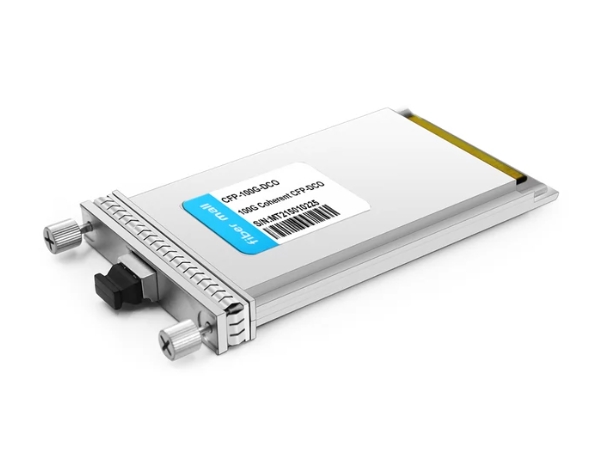
The term 100G coherent technology stands for integrating complex modulation formats, specifically Quadrature Phase Shift Keying (QPSK), and using cohesive detection techniques to achieve 100 Gbps data rates in optical transmission systems. Digital Signal Processing (DSP) eliminates chromatic, polarization mode dispersion, and other fiber impairments, which ensures the improvement of long-distance transmission systems. 100G ZR QSFP28-DCO is an example of coherent transceivers that modulate both the amplitude and phase of the light, making it possible to boost the quantity of data sent over one’s bandwidth. 100G coherent technology also makes it possible to achieve spectral efficiency by transmitting two data streams on the orthogonal polarizations using PDM. This makes 100G coherent technology best suited for modern high-capacity networks.
Understanding the Basics of Coherent Optical Transmission
Coherent optical transmission is a sophisticated and widely used approach to increase data rates and transmission quality in optical networks. Specifically, this technique uses cohesive detection that is capable of retrieving both phase and amplitude aspects of an optical signal. Coherent receiver technology uses a local oscillator laser, which generates reference waves and consequently allows the signal to be detected and analyzed. Modulations such as quadrature phase shift keying (QPSK) and quadrature amplitude modulated (QAM) schemes improve the data per wavelength. Digital signal processing (DSP) also has a role in optic loss due to chromatic dispersion and polarization mode dispersion (PMD), which suffers from a range of distances. In simple words, coherent optical transmission significantly improves a network’s spectral efficiency and overall performance, which is pertinent to the higher demands for higher data transmission rates in the telecommunication and data center areas.
The Role of Digital Signal Processors (DSP) in Coherent 100G Systems
The Digital Signal Processors (DSPs) are essential in implementing environmentally coherent 100G systems, mainly by performing the complex calculations associated with real-time signal processing. A DSP compensates for signal distortions from transmission impairments like chromatic dispersion and, more importantly, polarization mode dispersion (PMD). This is done using sophisticated algorithms that adaptively equalize the received signals, allowing for high fidelity in data interpretation, much like what the DSP performs for 100G ZR applications. Furthermore, DSPs handle QPSK and QAM together with other multi-level signals with complex phases and amplitude, which are necessary for ZR QSFP28 optical digital coherent modules to function well. The incorporation of DSPs in environmentally coherent 100G systems improves the performance of the system, optimizing the utilization of the spectral resources available and meeting the growing expectations of bandwidth of current and future optical networks.
Key Advantages of Implementing 100G Coherent Technology
The rollout of 100G coherent technology has distinct merits in terms of both network performance and network capacity. First, it enhances spectral efficiency, thus allowing for more data to be transmitted over a single fiber plant. This is made possible through advanced modulation formats and the capability of dynamic compensation for transmission impairments. Second, 100G coherent technology improves the optical reach of the signals, decreasing the frequency of optical-electrical-optical conversion, which aids in network architecture and design and has a corresponding effect on operational expenditure regarding the usual module power dissipation. In addition, it is compatible with flex-grid technology, which supports the conveyance of different bandwidths. All these gains go a long way in meeting the ever-increasing bandwidth requirements of contemporary telecommunication and data center networks while at the same time providing an avenue for future expansion.
How Do 100G Coherent Transceivers Transform DWDM Networks?
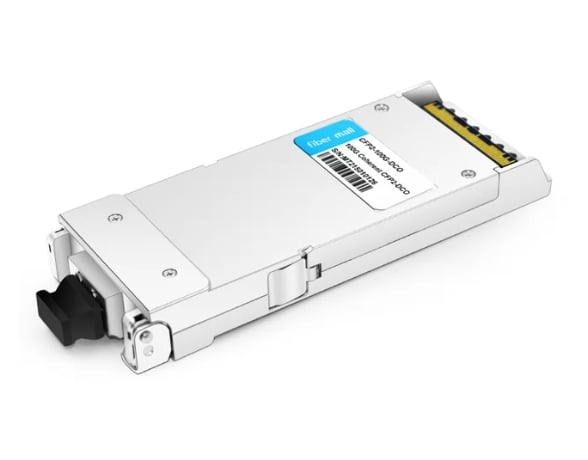
Enhancing Data Transmission with 100G Coherent DWDM
100G coherent DWDM technology revolutionizes data signal transmission by seamlessly integrating efficient modulation techniques and digital signal processing practices coupled with coherent detection. This eliminates the need for additional infrastructure by allowing several data channels to coexist on a single optical fiber, thus tremendously augmenting the volume of data transmission possible. Furthermore, coherent discrimination makes vital allowances for fiber disadvantages such as chromatic access and dispersion of polarization in primary mode, which enhances the distance over which the optical signals can travel. In addition, 100G coherent DWDM helps to adapt sophisticated modulation standards like quadrature amplitude modulation (QAM) that allow transmitting more bits with every symbol used, thus increasing frequency utilization efficiency. In concert, such technical progress fundamentally changes the architecture of DWDM networks and offers cost-effective means to address the continuously expanding market for data-driven applications and services.
Pluggable Solutions: The Role of QSFP28 in DWDM Coherent Networks
According to the latest data, NGSN (next-generation network switch) modules are quite crucial for DWDM (Dense Wavelength Division Multiplexing) coherent networks as they are small, cheap, and allow transmitting data at high rates over large distances. These modules can be integrated without changing the existing network architecture and allow support of 100G data rate while improving the flexibility and scalability of the network. Since hot swapping in the QSFP28 form factor is possible, this reduces downtime to replace defective components and allows for more efficient repair and upgrading of the network. Further, these modules enable optimizing power consumption and heat generation, which is critical for power efficiency in data centers and telecom networks. Using these modules, network operators can respond to the growing bandwidth needs while remaining economically viable and easy to operate.
Deployment Strategies for 100G Coherent DWDM Systems
Several strategies can be deployed when adding new 100G DWDM systems into existing network architecture and redesign. One of the first steps undertaken is implementing a flexible grid technology that enables transmission channels to utilize the spectrum more efficiently than fixed grids. This increases capacity and spectral efficiency since more channels can be fitted within a given bandwidth. Advanced coherent processing technologies and FEC methods are also applied to improve signal quality, transmission distance, and error rates, even over long hops. One more meaningful way of making this possible is using the SDN technique that enables integrated self-optimizing and self-organization network management of modules, such as the QSFP28. One of the essential functions such an approach would provide is the ability to adjust to changes in traffic within a short time, optimal usage of available resources, and cutting down costs due to decreased operational expenses. These considerations are how the 100G coherent DWDM systems can respond to the increase in demand for data throughput across telecom and data center infrastructures in the modern world.
What Are the Applications of 100G Coherent Transceivers in Data Centers?
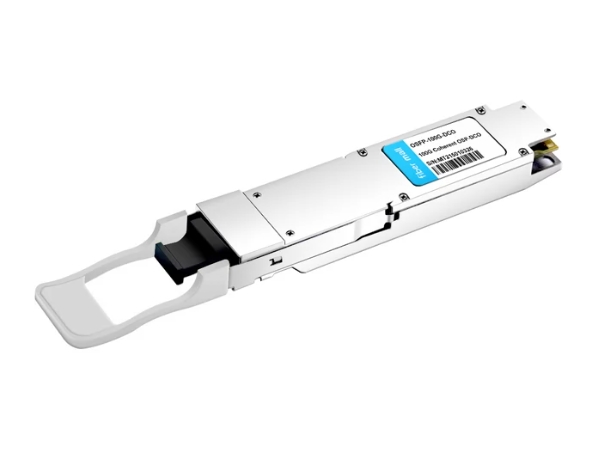
Improving Data Center Interconnectivity with Coherent 100G
Decentralized applications would traumatize the modern data center architecture, celebrating only cloud technologies that rely on its service functions; however, due to Interconnectedness, Coherent 100G technologies appear to be advantageous in both aspects, capacity and reach. As with other transceivers, the modulated and digitally processed 100G ZR QSFP28-DCO help set up numerous data center connections with good bandwidth; the network design also allows for large-scale data movement. Additionally, this renders coherent 100G transceivers, enabling corporates to reduce operational costs without compromising performance and reliability while maximizing space and energy intake. Hence, cohesive technology makes sense in the present world of data centers amassing all the 100G ZR QSFP28 digital coherent optics to support the digital and cloud services of tomorrow’s world.
How Coherent Pluggable Modules Fit into Modern Data Centers
Coherent pluggable modules are omnipresent in today’s data centers since they provide high-capacity and long-distance connectivity links. The modules can easily integrate with current facilities, thus providing an agile network architecture that can respond quickly to ever-changing data needs. Complete duplex transmissions and low power usage are among the attributes of coherent pluggable modules that improve the network. Their form factor improves the data center’s growth potential by improving floor space utilization. Furthermore, these modules facilitate simpler network management and deployment procedures, lowering complexity and operational costs and enabling modern data centers’ robust and dynamic nature.
Case Studies: Deployment of 100G Coherent Solutions in Data Centers
A few advanced data centers have been using 100G coherent technologies and services already, which shows how far this technology can be taken. For example, one of the content delivery networks implemented these solutions to increase their latency and, in return, yield better performance and responsiveness to the network users. Likewise, large banking institutions incorporated 100G coherent technology in their high-frequency trading systems to ensure a lower lag time level and that constant connection, which is crucial for transactions to take place in real-time, is maintained. Finally, one of the cloud service companies integrated its 100G coherent systems to connect more users without jeopardizing the quality of service of a fast-growing user base. These instances highlight the importance of 100G coherent solutions in achieving efficiency and growth in data center management.
How Do Coherent DCO Modules Impact Optical Transmission?
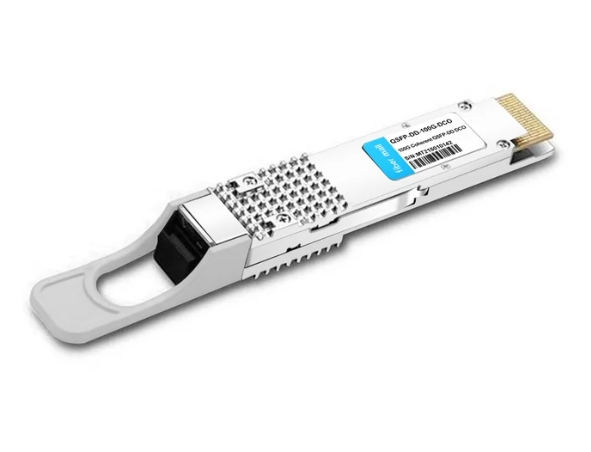
Exploring the Capabilities of Digital Coherent Optics (DCO)
Digital Coherent Optics (DCO) significantly improves optical transmission because of the coherent demodulation and modulation formats. With this technology, higher data rates and increased distance are achieved, enabling a better use of the present fiber infrastructure. Advanced digital signal processors form part of DCO modules and are used to iron out complex non-linearities and dispersion of the signal, thus enhancing its quality. In addition, these modules also ensure that bandwidth is used optimally, even with increasing requirements for bandwidth growth, without having to use additional fiber. By employing ZR QSFP28 digital coherent optics into optical networks, the deployment became more flexible, more resistant to impairments, and reduced capital and operational costs. These advances mean that DCO takes on the critical task of accomplishing the increasing requirements for speed and capacity of modern digital communication networks.
Comparing Coherent CFP2-DCO and QSFP28-DCO Modules
When comparing Coherent CFP2-DCO and QSFP28-DCO, certain factors must be considered, which enable them to be used in different applications in optical networks. This is why it is generally recognized that the CFP2-DCO module has a higher power budget, thus being ideal in a long-haul communication scenario where greater distances need to be covered in transmission. In addition, it has been reported that they can support a wide range of modulation formats, which ultimately enhances their versatility and ability to cope with intricate network demands.
On the contrary, the custom-developed QSFP28-DCO module stands out as efficient and versatile. It has a compact design, integrates well with newer data center architecture, and is cost-effective. This module offers benefits in metro and data center interconnect scenarios due to its low power requirement and efficient use of resources. It also presents a logical option for use in cases emphasizing high data volume transmission, and there is no need to cover a wide area.
As the CFP2-DCO module is designed to operate effectively over long ranges, other solutions, such as the QSFP28-DCO module, while efficient and space-conserving, provide operational advantages over short commonplace scenarios. Therefore, as part of an overall optical network strategy, all three are said to be complementary devices.
Optimizing Optical Networks with Tunable Coherent Modules
In my approach to optimizing optical networks with tunable coherent modules, I strive to make the best use of their tunability and dynamic range strategy-wise about the optical front-end and a power-optimized design in such a way that the flexibility and efficiency of the network are improved. Tunable coherent modules allow me to easily change such parameters as wavelengths and modulation formats to correspond with different needs and conditions of the network. This is important to ensure good performance under various circumstances, whether through long-haul or metro connections. Moreover, when I apply tunable modules, I can cut down on the expenses of managing inventory levels and purchasing costs associated with holding fixed-wavelength transceiver stocks. They also extend the options for resisting advanced chromatic and polarization mode dispersion and improving data transmission and signal interference suppression.
What are the Challenges and Future Trends of 100G Coherent Technology?
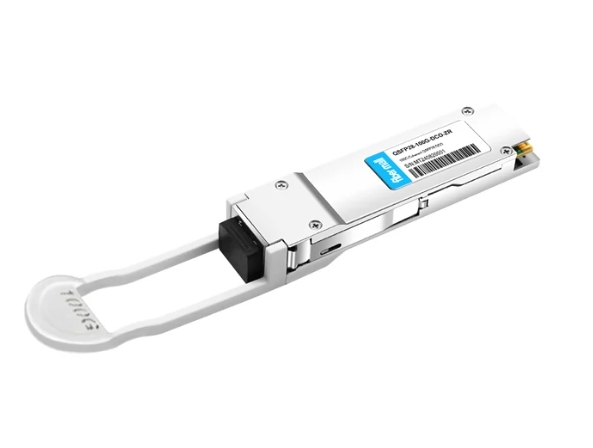
Overcoming Current Challenges in Coherent 100G Deployments
Turning my gaze toward tackling current roadblocks in coherent 100G deployments, I have self-identified several critical areas that need intervention. For starters, there is the difficulty of modifying the coherent ZR 100G ZR QSFP28-DCO transceiver within the already operational elements of the network, which has to be managed well to avoid any confrontation and planning that thickens. Regarding scale-up, power consumption remains a necessary evil since it is one thing to reduce consumption and quite another to have the output unaffected. Further, the deployment costs, courtesy of procuring sophisticated optical components and the additional infrastructure requirements, pose significant hurdles. I have a plan to minimize these challenges through the adoption of modern and cost-effective communication systems. Developing relevant transceiver technology to supplement the existing bandwidths will be necessary as the world progresses.
Future Innovations in Coherent Optical Transceiver Technologies
Wireless innovations must come forth for 100G coherent technology to be helpful. Generally, the trends point out an advancement of three major themes. Firstly, introducing pluggable coherent modules should improve the potential for scalability by making upgrades and integration with present networks easier. Secondly, enhanced digital signal processing (DSP) innovations have enhanced efficiency and minimization of latency, factors critical in accurately generating large amounts of data. Lastly, reducing the power needs of optical transmitters also recorded modest successes through innovative materials and photonic integration technologies. All these advances are reaching expectations for future coherent technology, achieving high-performance levels, low-cost solutions, and high efficiency in optical networks.
The Road Ahead: Integrating Coherent Technologies in Global Networks
The telecommunications industry is focusing on global networks through coherent technology integration. As gathered from such significant suppliers and industry analysts as prominent sources, the successful adoption of the LHX model is governed by several key factors. To begin with, infrastructure financing is crucial since it guarantees optimal use and integration of these advanced technologies. Moreover, partnerships between telecoms and technology solution providers create new opportunities to solve specific territorial and organizational problems, such as developing optical transport networks built on OTU4 standards. It is anticipated that a strategy that fosters modularity and flexibility would enable efficient network scaling up. Last but not least, the trends towards higher degrees of machine learning and artificial intelligence are of great importance for network operation and service provision management, which indeed speeds the globalization of coherent optical technologies integration. These aspects highlight how technology and strategy complement each other in the evolution of optical communications.
Reference Sources
Frequently Asked Questions (FAQs)
Q: What are 100G Coherent Optical Transceivers?
A: 100G Coherent Optical Transceivers are unique and cutting-edge devices used in transmission across fiber optics that work to achieve speeds of up to 100 Gbps. They incorporate modulation schemes to enhance the signal’s integrity for longer-distance transmission.
Q: How does the coherent CFP2 DCO change the dynamics of optical networks?
A: Coherent CFP2 DCO (Digital Coherent Optics) promotes efficiency and performance in optical networks. It allows for higher data rates and longer distances to be transmitted while minimizing the dispersion effects, which allows for better OTN (Optical Transport Network) functionalities.
Q: Why does wavelength matter in the context of 100G optical networks?
A: A single 100G optical network can have many different transmission channels; the wavelength is critical in determining these channels. For example, in 100G DWDM (Dense Wavelength Division Multiplexing), more channels can be constructed over one fiber, increasing the network’s capacity.
Q: What importance does the 100G ZR QSFP28-DCO module serve?
A: The 100G ZR QSFP28-DCO module is essential as it enables wire propagation in edge networks compactly and efficiently. It merges digital coherent technology with the QSFP28 pluggable form factor to provide solutions for scalable optical interconnects.
Q: What advantages do coherent optical transceivers offer?
A: Coherent optical transceivers offer advantages such as enhanced signal quality due to advanced DSP (Digital Signal Processing), extended distance without optical amplifiers, and very high spectral bandwidth utilization. Such advantages are essential in OTN and other applications focused on high-capacity optical networking.
Q: How do 100G coherent technologies and PON modules work together?
A: PON (Passive Optical Network) modules can leverage 100G coherent technologies for seamless integration on fiber optic networks. These networks use coherent detection and DSP to have longer reach and higher capacity, which is critical for modern optics storage networking.
Q: Define a c-band tunable optical transceiver module.
A: A c-band tunable optical transceiver module emits an output wavelength in a c-band wavelength region. This capability supports the dynamic reconfiguration of optical networks, where underutilized bandwidth is reallocated, and network management becomes less complicated.
Q: What role does the Steelerton DSP play in optical networks, and what is its significance?
A: The Steelerton DSP is necessary because it helps design systems with the required low power and performance in 100G optical networks. Employing the coherent Steelerton DSP, the modules harness robust processing capabilities and low power consumption benefits, complementing high-density deployments.
Q: What are the contributions of IEEE standards about 100G coherent transceivers?
A: Standards are intended to provide consistency and effective cross-network use of the 100G coherent transceivers. These standards assist in specifying the coordinates defining the optical telecommunications wavelengths, modulation formats, and signal integrity, which is crucial for the functional integration of contemporary optical networks, precisely the requirements related to OTU4.
Related Products:
-
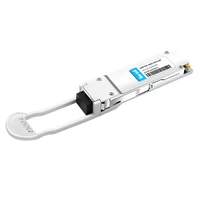 QSFP28-100G-DCO-ZR 100G Coherent QSFP28 DCO C-band Tunable Optical Transceiver Module
$6000.00
QSFP28-100G-DCO-ZR 100G Coherent QSFP28 DCO C-band Tunable Optical Transceiver Module
$6000.00
-
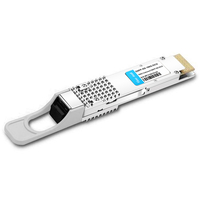 QSFP-DD-100G-DCO 100G Coherent QSFP-DD DCO C-band Tunable Optical Transceiver Module
$6500.00
QSFP-DD-100G-DCO 100G Coherent QSFP-DD DCO C-band Tunable Optical Transceiver Module
$6500.00
-
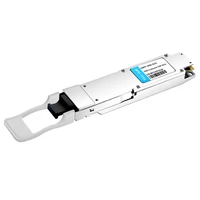 OSFP-100G-DCO 100G Coherent OSFP-DCO C-band Tunable Optical Transceiver Module
$6500.00
OSFP-100G-DCO 100G Coherent OSFP-DCO C-band Tunable Optical Transceiver Module
$6500.00
-
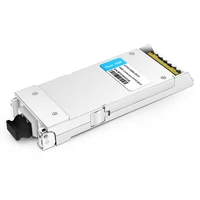 CFP2-100G-DCO 100G Coherent CFP2-DCO C-band Tunable Optical Transceiver Module
$7000.00
CFP2-100G-DCO 100G Coherent CFP2-DCO C-band Tunable Optical Transceiver Module
$7000.00
